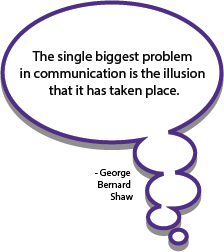COMMUNICATE: END OF LIFE CARE CHOICES
It’s time to communicate your end of life care choices with your family, friends and physicians.
Model the Way
If you want to discuss someone elses end of life care choices (i.e. a parent), be willing to do the work yourself first. Think about your own preferences. Put your decisions in writing by using advance care directives. Then, open the conversation by sharing your own thoughts, rather than putting the other person on the spot. Its only fair.
Set the Stage
This end of life conversation can be exceptionally difficult if other people are not prepared for it. It does not mean they have to complete advance directives right away, but it can be helpful if they at know and end of life conversation is coming. Also, use your knowledge of the people involved; some will prefer group interactions but others might like it to be more one-on-one.
Use a Reference Point
 It can be useful to find a trigger event to Begin the Conversation about end of life, such as the death of another person, a relevant news event, a book/article/TV episode, etc. Begin by asking what the other person thought about it and see if this can lead into deeper conversations. Ask if they know what an advance directive is. Remember, take small steps at first.
It can be useful to find a trigger event to Begin the Conversation about end of life, such as the death of another person, a relevant news event, a book/article/TV episode, etc. Begin by asking what the other person thought about it and see if this can lead into deeper conversations. Ask if they know what an advance directive is. Remember, take small steps at first.
Use Two-Way Communication
Allow your loved ones to share their own beliefs/choices/preferences about end of life and use them as a point of comparison or contrast to your own. Understand you dont have to be in agreement to begin this conversation. Try to create a win-win scenario where you are able to express yourself and your loved ones feel empowered to do the same. Remember to listen as much as you talk.
Remember the Purpose
End of life care planning has two goals: to make sure your healthcare wishes are expressed and honored by using advance directives, and to give a gift to your family and loved ones. It provides them with critical information and confidence needed for future decisions.
